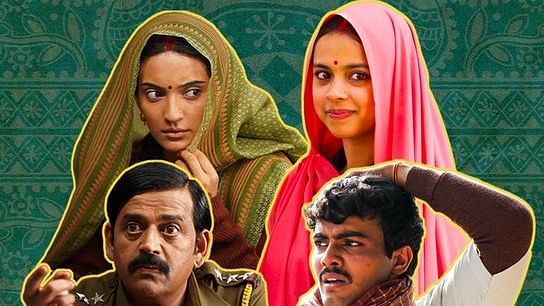
The success of Laapataa Ladies offers an opportunity for Indian cinema to embrace a more inclusive, socially responsible narrative.
Credit: X/@AKPPL_Official
Cinema mirrors our social realities, capturing struggles, hardships, and inequalities while also offering stories of hope and resilience. Over the past decade, India’s Oscar submissions have increasingly highlighted critical social issues, reflecting the country’s evolving cinematic landscape. Films like Court (2015), Newton (2017), and Gully Boy (2019) have brought attention to the struggles of marginalised communities, while entries like Jallikattu (2020) and Last Film Show (2022) showcase the diverse and vibrant rural landscape of India. Along similar lines, the selection of Laapataa Ladies as India’s official entry for the 2024 Academy Awards is both timely and cause for celebration. This film, with its quasi-feminist perspective, sheds light on the complex cultural and social burdens faced by rural women in India. It offers a poignant narrative that challenges the status quo while urging us to re-examine the way our cinema represents the marginalised. Yet, despite the intellectual and artistic merit of such films, they are often sidelined in India’s mainstream film festivals and awards.
Films with profound social messages or artistic depth often struggle to gain recognition at major film festivals or award shows, such as Filmfare and IIFA. While international platforms like the Oscars or the Golden Globes often celebrate creativity and cinematic excellence, Indian award shows tend to focus more on commercial success. For instance, this year’s IIFA gave five awards to Animal, including Best Film, sidelining critically significant films like Laapataa Ladies and Sirf Ek Banda Kafi Hai.
Such awards primarily serve as platforms for promoting celebrity culture and populist cinema, often ignoring films that represent India’s rich social tapestry or challenge societal norms. Consequently, cinematic works that highlight the lives and struggles of vulnerable social groups, such as Dalits, Adivasis, and rural women, rarely receive the attention they deserve. This trend raises important questions about the socio-political concerns and cultural interests that dominate Bollywood and the Indian film industry at large.
Indian cinema has long been criticised for failing to authentically represent marginalised communities, both on screen and behind the scenes. The exclusion of Dalits, Adivasis, and other under-represented groups from Indian cinema is a glaring omission, yet the issue has received little attention in public discourse. As a powerful cultural institution, cinema has the potential to educate and inspire, but to do so, it must reflect the diversity of the society it seeks to entertain and engage. Mainstream festivals and awards must take it upon themselves to elevate stories that spotlight the experiences, dreams, and struggles of marginalised communities. There is an urgent need for either the reform of these platforms or the creation of new, socially conscious film festivals that prioritise narratives and talent from diverse social groups, thereby encouraging a more inclusive film industry.
The Oscars themselves have faced criticism for their lack of diversity. In 2015, the #OscarsSoWhite campaign criticised the under-representation of people of colour in major award categories, ultimately leading to a broader conversation about diversity in Hollywood. As a result, the Academy introduced reforms, and today, African American, Asian, and Hispanic artists receive greater recognition. Festivals like the Black American Film Festival in Miami also celebrate diversity and promote social harmony. Unfortunately, Indian cinema has yet to engage with such conversations at a meaningful level.
Though there has been some progress—such as the rise of impressive films like Pariyerum Perumal, Masaan, and Sairaat, which represent Dalit characters and their socio-political voices—these films are still peripheral to mainstream discourse. The success of Laapataa Ladies offers an opportunity for Indian cinema to embrace a more inclusive, socially responsible narrative. Recognising the contributions of artists and filmmakers from marginalised backgrounds is essential to building a more equitable and diverse industry. Indian cinema has the power to educate audiences about the nation’s complex social history.
By celebrating films that give voice to historically marginalised communities, we can create a more inclusive cinematic landscape that honours diversity in both storytelling and representation. The time has come for Indian film festivals and awards to reflect this cultural shift, providing a platform for the untold stories of the many Indias that coexist within our nation.
The selection of Laapataa Ladies for the Oscars is a positive step toward this goal. It should inspire not just appreciation but also a movement for broader inclusivity within Indian cinema, fostering an environment where artistic expression thrives and the vital stories of the under-represented are finally heard.
(The writer teaches at the Centre for Political Studies, Jawaharlal Nehru University)